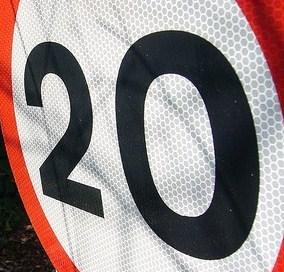- News
- Reviews
- Bikes
- Components
- Bar tape & grips
- Bottom brackets
- Brake & gear cables
- Brake & STI levers
- Brake pads & spares
- Brakes
- Cassettes & freewheels
- Chains
- Chainsets & chainrings
- Derailleurs - front
- Derailleurs - rear
- Forks
- Gear levers & shifters
- Groupsets
- Handlebars & extensions
- Headsets
- Hubs
- Inner tubes
- Pedals
- Quick releases & skewers
- Saddles
- Seatposts
- Stems
- Wheels
- Tyres
- Tubeless valves
- Accessories
- Accessories - misc
- Computer mounts
- Bags
- Bar ends
- Bike bags & cases
- Bottle cages
- Bottles
- Cameras
- Car racks
- Child seats
- Computers
- Glasses
- GPS units
- Helmets
- Lights - front
- Lights - rear
- Lights - sets
- Locks
- Mirrors
- Mudguards
- Racks
- Pumps & CO2 inflators
- Puncture kits
- Reflectives
- Smart watches
- Stands and racks
- Trailers
- Clothing
- Health, fitness and nutrition
- Tools and workshop
- Miscellaneous
- Buyers Guides
- Features
- Forum
- Recommends
- Podcast
news
 20 sign.jpg
20 sign.jpg20mph zones reduce cycling casualties by almost a fifth, say researchers
The introduction of 20mph zones in parts of London has led to a reduction of almost a fifth in the number of accidents involving cyclists in London, according to research published in medical journal, the BMJ.
The study found that introducing 20mph zones led to a 41.9% fall in the number of road casualties, with the biggest impact seen in accidents involving younger children, as well as in accidents involving fatalities or serious injuries.
The number of cyclists killed or seriously injured in road traffic accidents fell by 17% in 20mph zones, with a greater drop observed in accidents involving children.
Researchers added that they found no evidence of casualties having migrated to roads adjacent to 20mph zones that had higher speed limits – indeed these saw an average 8% reduction in casualty numbers.
The study, undertaken by a team led by Dr Chris Grundy from the Department of Public Health and Policy, London School of Hygiene and Tropical Medicine, was conducted by analysing geographically coded police data regarding road casualties from 1986 to 2006.
It concluded: “This evidence supports the rationale for 20mph zones not just in major cities in Britain but also in similar metropolitan areas elsewhere. Indeed, even within London, there is a case for extending the currently limited provision of such zones to other high casualty roads.”
Transport Secretary Lord Adonis has also given his backing to the introduction of 20mph zones. Named personality of the month for December on the Cycling England website, in response to the question, “What most encourages you about cycling where you live?” he replied, ”new 20 mph zones throughout Islington’s residential streets, which together with traffic calming is making the area safer for cyclists.”
No doubt the minister will have welcomed the news earlier this month that the London Borough of Islington plans to introduce a 20mph across most of its roads.
So far, 20mph zones have been introduced in large areas of cities in England such as Oxford and Hull, while Glasgow City Council is also planning to adopt the measure in residential areas.
Latest Comments
- mdavidford 15 min 32 sec ago
Should look where they're going.
- pockstone 41 min 39 sec ago
At the heart of great comedy lies truth.
- brooksby 43 min 42 sec ago
"I'm so sorry, I seem to have knocked that mirror. … I'm sorry, I seem to have done it again. And again."...
- Cugel 53 min 41 sec ago
The "more cycling infrastructure" lobby is fixated on their supposed "solution" to the dangers of bad driving, despite an overwhelming amount of...
- Car Delenda Est 1 hour 34 min ago
If it rests on intent then the lock is fine if it's on your own property, you can't really argue the cyclist was eagerly waiting for their bike to...
- David9694 2 hours 57 min ago
Notwithstanding its collapsing circulation, I still get it quoted to me as a source of news and information in my local Comments section. If I...
- hutchdaddy 3 hours 29 min ago
It's clearly a shit car, you won't get your cycle in the back of it and it won't have a CD player.
- essexian 4 hours 47 min ago
Before I had even said this persons home address, my wife said upon hearing the story: "He's from Loggerheads isn't he...."
- Rekrab 13 hours 50 min ago
MORE LANES, MORE LANES!!!!
- Simon E 13 hours 57 min ago
The numbers don't tell anything like the whole story....
Add new comment
5 comments
In a 20 mph zone, most vehicle drivers will be travelling at 30 mph I presume.
Anything that improves the safety of young cyclists has got to be a good thing.
… well you would
Has anyone bothered to look at the traffic volume on these roads with a 20mph limit, and how that's changed?
As a driver, I avoid these areas like the plague as most of them are a nightmare of speedbumps, inconsistent speed of other users, and crossings which slow the flow anyway.
I'd rather understand the roads with high casualty rates and why they have that high casualty (is it their design, obstacles, directness of route, visibility, drainage etc) and look to address those issues rather than blanket a 20mph limit.
It's like saying make all knives blunt and you'll reduce knife casualties.
http://news.bbc.co.uk/1/hi/magazine/8101032.stm